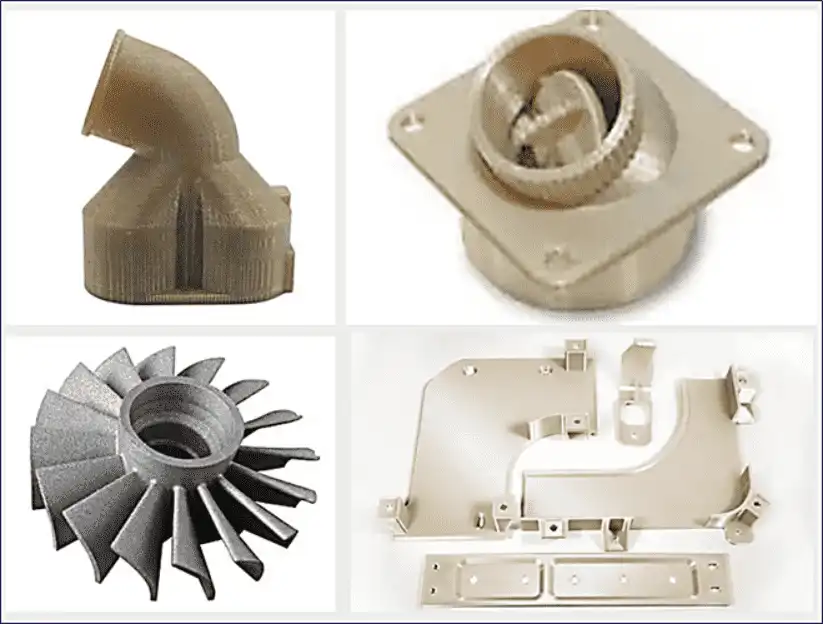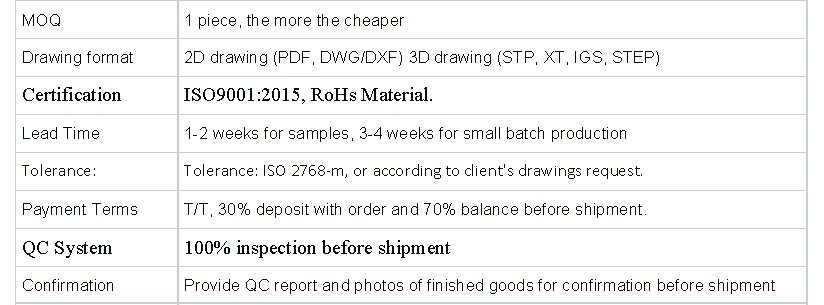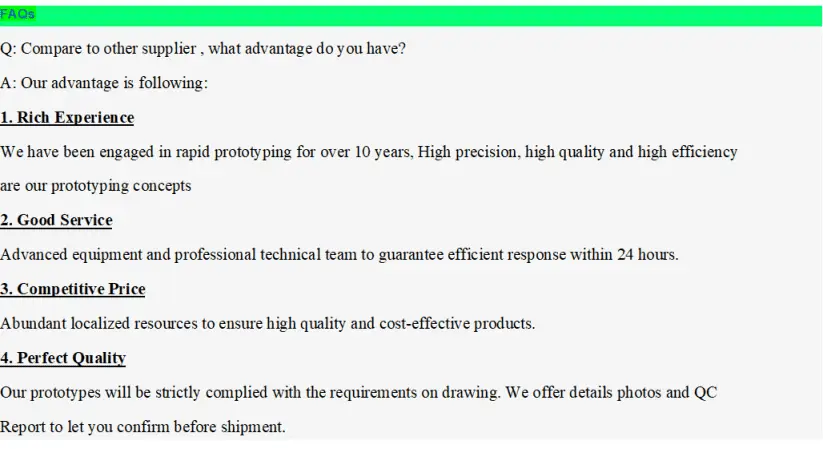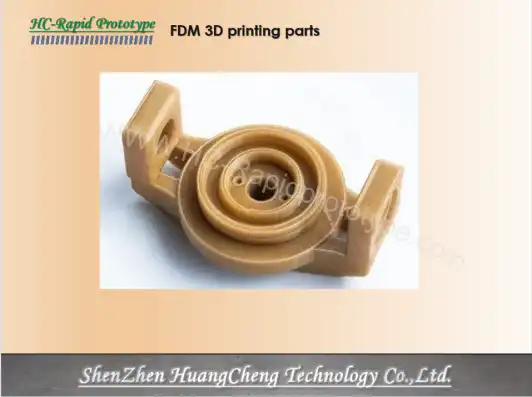Product Details
|
Name |
FDM 3D printing parts |
|
Size |
Customized Size |
|
Material |
ABS, PLA, PP , PA, Rubber etc. |
|
Surface finish |
Sanding, polishing, painting, silk screen etc. |
|
Application |
Medical equipment, aerospace, auto parts, Industrial equipment , bioprosthesis and other industries. |
Introduction
FDM, short for "Fused Deposition Modeling," is a widely - used fusion molding method that involves heating and melting various filaments, such as engineering plastics like ABS and polycarbonate PC. Its working principle is as follows: under the precise control of a computer, the heating nozzle moves in the XY plane based on the product's profile information. The wire feeding mechanism feeds the thermoplastic filamentary material into the hot melt nozzle, where it is heated and transformed into a semi - liquid state. This molten material is then extruded and selectively deposited on the workbench. Upon extrusion, it rapidly cools, solidifying into a sheet approximately 0.127 mm thick. After the first layer of the section is completed, the worktable is lowered by a specific height, and the process of cladding the next layer begins, gradually building up the three - dimensional object layer by layer.
Advantages of FDM
• Due to both construction principle and operation of the hot melt extrusion head system are simple, the maintenance cost is low, and the system runs safely. The hot melt extrusion head system features an uncomplicated construction principle and straightforward operation. This simplicity reduces the likelihood of mechanical failures, leading to minimal maintenance requirements and lower costs. Additionally, its basic design ensures safe operation, minimizing risks in the production environment.
• Molding speed is slow, and the products produced by the fused deposition method do not require blade process in SLA. Fused deposition modeling has a relatively slow molding speed compared to some other 3D printing techniques. However, an advantage is that unlike Stereolithography (SLA) which may need a blade process to smooth surfaces, FDM 3D printing parts can be created without this extra step, simplifying the production workflow in certain aspects.
• Part prototypes molded with wax can be used directly for investment casting. Wax - molded part prototypes offer a significant advantage in the manufacturing process. They can be directly employed in investment casting, eliminating the need for additional complex preparatory steps. This direct usability streamlines the transition from prototyping to the production of final metal components.
• It can form parts of any complexity and is often used to form parts with very complex cavities, holes etc. FDM technology excels at creating parts of extreme complexity. It has the ability to fabricate components with intricate cavities, holes, and other elaborate internal structures. This makes it a preferred choice for industries that require the production of highly detailed and complex parts.
• There is no chemical change in the raw materials during the molding process, and the warpage of workpiece is small. During the FDM molding process, raw materials undergo only physical changes, such as melting and solidifying, without any chemical reactions. This lack of chemical alteration helps maintain material stability, resulting in minimal warpage of the workpiece and ensuring dimensional accuracy.
• High utilization rate of raw materials and long material life. FDM offers a high utilization rate of raw materials as the extrusion process deposits material precisely where needed, minimizing waste. Moreover, the materials used in this process have a relatively long lifespan, allowing for extended storage and usage without significant degradation in quality or performance.
*Partial FDM 3D printing parts for Reference

FDM 3D Printing Tips
FDM builds the part layer by layer with a filament whose diameter determines a lot of what can and cannot be printed. For example, the minimum wall thickness must be at least as thick as the material, and any small features or details must also take this into account.
FMD has difficulty handling holes and tends to print them about 2-4% undersized. Either design your holes slightly larger to accommodate this, or post-process for the drilled holes. Inserts can also be installed for any holes that require threading.Ø
Deliver information


FAQ

YOU MAY LIKE

_1744788508965.png)






